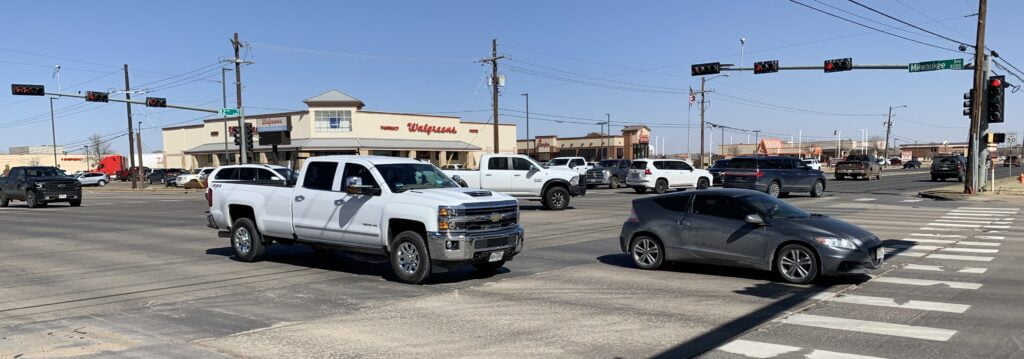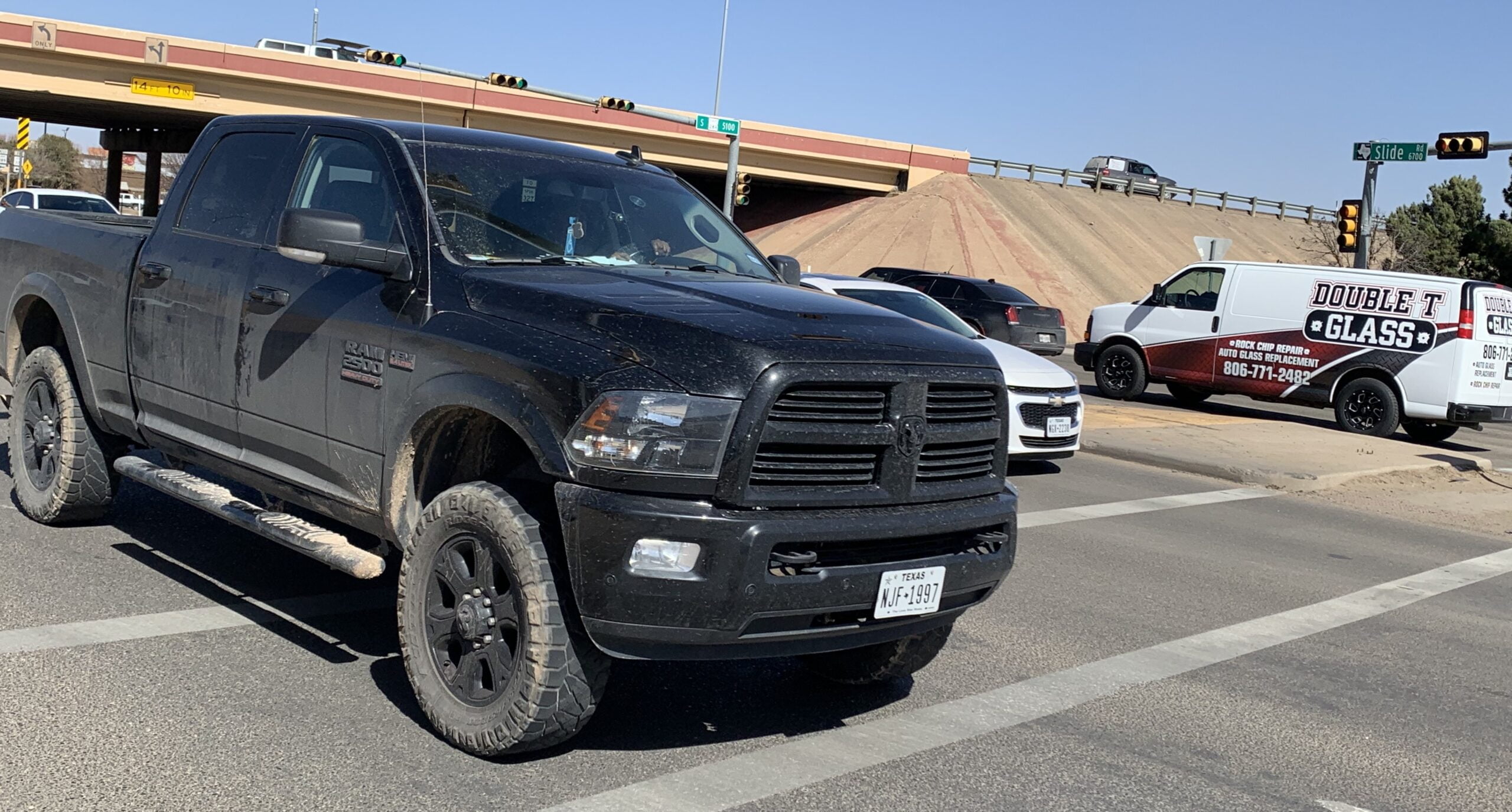Editor’s note: When we started Lubbock Lights almost three years ago, we had an idea for a column called Driving in Lubbock … it’s something people love to talk (and complain) about. We ran into some problems being able to get it going consistently, but have worked them out and, well, here’s some stuff to think about the next time you’re out driving.
Want to avoid a traffic accident?
Stay away from anywhere near Loop 289 and Slide Road around 5 p.m. and control your speed – no matter how fast you’re going.
And be really careful in parking lots and while backing up.
Read on to understand more.
We asked the Lubbock Police Department for the ten worst intersections for accidents in 2020 and ended up with more details and helpful driving tips from Sgt. Tim Seeley, who is over Major Crash Investigations for LPD.
First, here are the bad top ten:
- Loop 289 & Slide Road: 139 accidents* (seen above)
* These include accidents in the intersection, but also accidents on the Loop, its access roads and Slide Road close to the intersection. So don’t think of it exactly in the intersection, but in and in the area of the intersection. And the bulk of this number is assumed to be the South Loop, but can include where Slide Road connects with the North Loop. That’s the same with some of the others on this list where you see an asterisk.
- Loop 289 and Quaker Avenue: 103*
- Loop 289 and University Avenue: 97*
- Milwaukee Avenue & 82nd Street: 88 (seen below)
- West Loop 289 and the Marsha Sharp Freeway: 84
- South Loop 289 and Indiana Avenue: 72
- Marsha Sharp Freeway and Interstate 27: 65
- Loop 289 and 50th Street: 62*
- Marsha Sharp Freeway and Milwaukee Avenue: 59
- Loop 289 & 19th Street: 53*
- … and coming in one short at 11 … University Avenue and 50th Street with 52.
 That adds up to almost 900 accidents in a year LPD wrote reports for almost 8,000 traffic accidents that include minor accidents, accidents with injuries, hit and runs and may include some just outside the city limits, said Sgt. Seeley.
That adds up to almost 900 accidents in a year LPD wrote reports for almost 8,000 traffic accidents that include minor accidents, accidents with injuries, hit and runs and may include some just outside the city limits, said Sgt. Seeley.
It doesn’t take a genius to figure out many of these intersections are between where a lot of us work and where a lot of us live. And they mostly happen going to work, coming home and going to lunch.
Sgt. Seeley shared times and accidents from 6 a.m. to 7 p.m.:
- 6 a.m.: 157
- 7 a.m.: 308
- 8 a.m.: 318
- 9 a.m.: 249
- 10 a.m.: 247
- 11 a.m.: 377
- Noon: 478
- 1 p.m.: 510
- 2 p.m.: 519
- 3 p.m.: 577
- 4 p.m.: 592
- 5 p.m.: 677
- 6 p.m.: 511
- 7 p.m.: 448
That adds up to almost 6,000 of the annual 8,000 accidents.
I asked Sgt. Seeley why the number of accidents stays high between 1 p.m. and 5 p.m.
Some if from people coming into Lubbock to shop from outside towns, he said.
So are you doomed to eventually be in accident at one of the top ten?
Sgt. Seeley offers these tips with a few more statistics from 2020, the top reasons for accidents:
- 17.6 percent were from failure to control speed. This can mean going 10 miles an hour and rear ending the car ahead of you. “I see a lot of these at intersections with lights,” said Seeley, saying when someone starts to go, then stops, if the driver behind them is only going 5 miles an hour and hits them, that’s failure to control speed. “Pay more attention to vehicle ahead of you,” he said. I told him I’d heard you should stop far enough behind the vehicle ahead of you so you can see the bottom of its back tires. That way if someone rear ends you, you hopefully won’t be knocked into them. Seeley suggested a vehicle-and-a-half distance ahead of you.
- 12.8 percent: Parking lot crashes, not including …
- 10.5 percent: Unsafe backing, which can include parking lots.
- 8 percent: Failure to drive a single lane … no wonder so many people say, “stay in your lane.”
- 5.2 percent: Unsafe speed greater than conditions … like the twits who’ve tailgated me recently on icy roads.
- 5.2 percent: Fail to yield right of way turning left.
- 5.1 percent: Fail to yield right of way from stop sign.
- 5.1 percent: Disregard stop light, or what people call red-light running.
- 4.7 percent: Unsafe lane change.
- 4 percent: Failure to yield from private drive
Seeley said the red-light running statistic addresses a misconception.
“It’s a problem, but it’s not as severe as people think,” he said, adding a lot of people are confused as to what the law is in this area.
“When the light turns red if you’re front tires are still behind the ‘stop bar’ then you’re running a red light. If you’re past the ‘stop bar’ and have entered the intersection when the light changes from yellow to red, you’re not breaking the law,” he said. “Some people think yellow means you’ve run a red light.”
I told Sgt. Seeley I told my daughters when they were learning to drive to always expect somebody to do something stupid and drive defensively.
He put it nicer:
“Be more attentive. Be able to slow down and drive defensively,” he said.
And expect somebody to do something stupid.

